Abstract
1. Angiotensin II-like activity was estimated from the contraction of the rat ascending colon superfused with arterial blood in an extracorporeal circuit. The colon was calibrated by infusion of synthetic angiotensin II amide (Hypertensin, CIBA Ltd).
2. Resting levels of angiotensin II-like activity were obtained by comparison of the length of a rat colon preparation superfused alternately with blood from an intact and from a nephrectomized rabbit.
3. The resting levels of angiotensin II-like activity reached a maximum value of about 1·6 ng/ml. at 10-14 days of age, and thereafter declined to the adult value of 0·23 ng/ml. Rabbits of less than 100 g body weight had resting levels in the same range as adults.
4. Removal of 25% of the calculated blood volume induced five times greater increments in arterial angiotensin II-like activity in immature than in adult rabbits (1·68 ± 0·26 S.E. of mean ng/ml. compared with 0·34 ± 0·08 S.E. of mean ng/ml.).
5. No evidence was obtained that the high levels of angiotensin II-like activity encountered in immature rabbits were attributable to a slower rate of inactivation of angiotensin by tissues.
6. The pronounced activity of the renin-angiotensin system demonstrated by these experiments in immature rabbits especially during haemorrhage is consistent with the suggestion that this system is of particular importance in cardiovascular control in early life.
Full text
PDF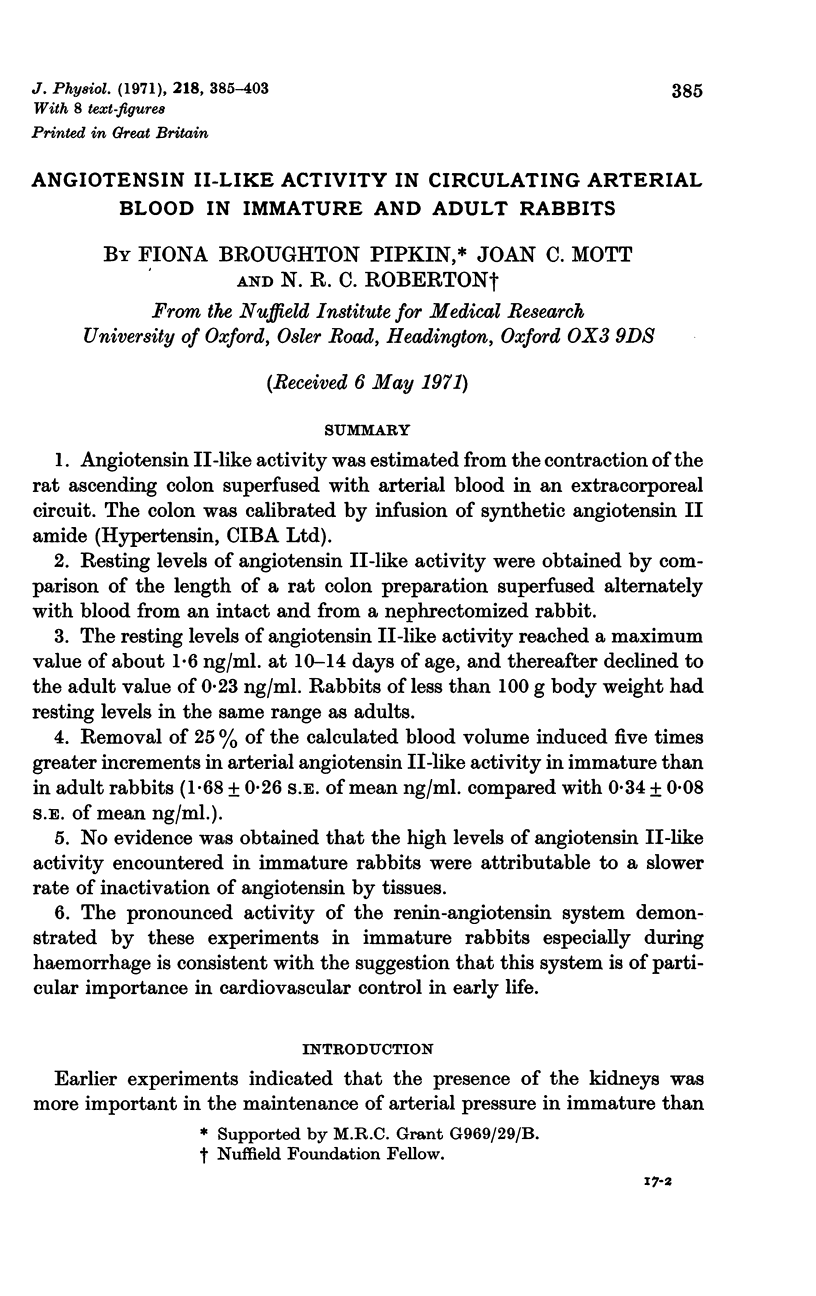
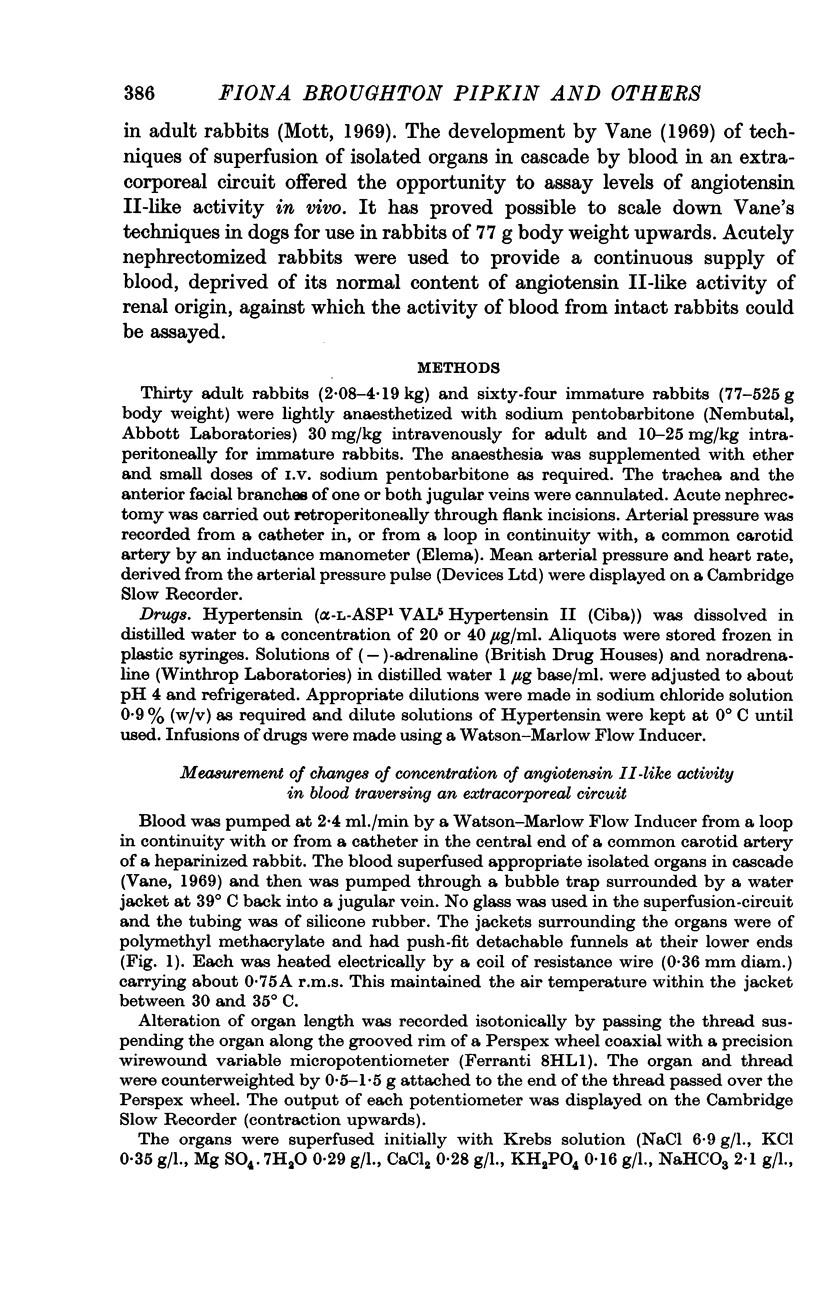
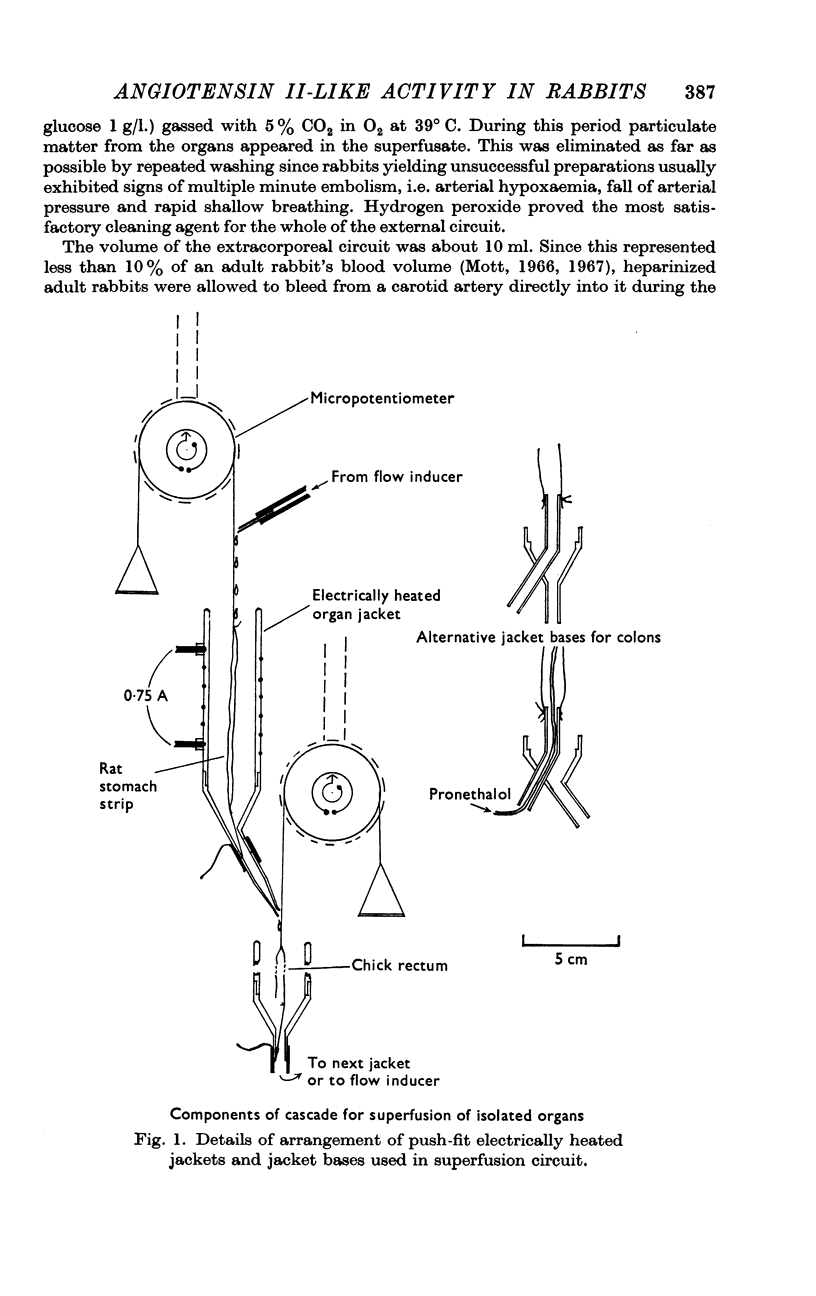
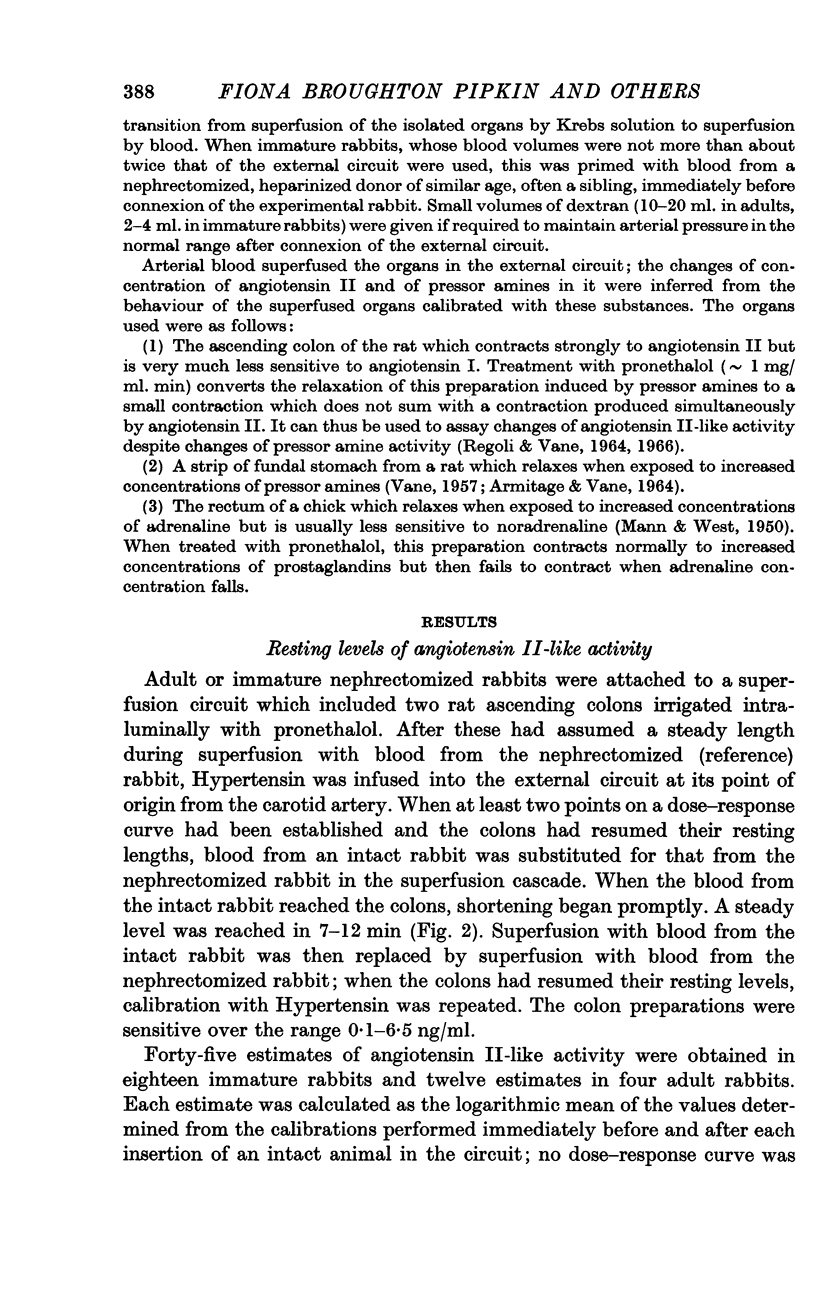
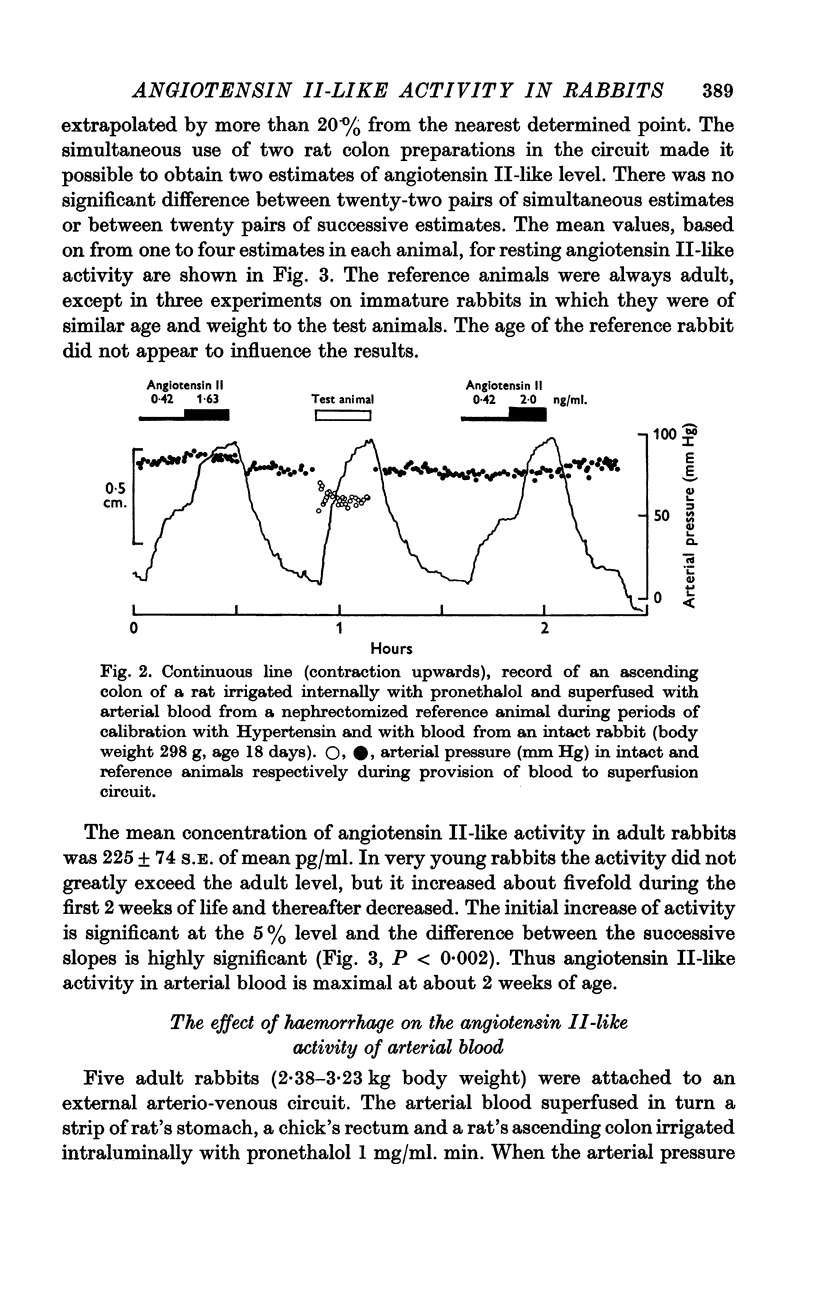
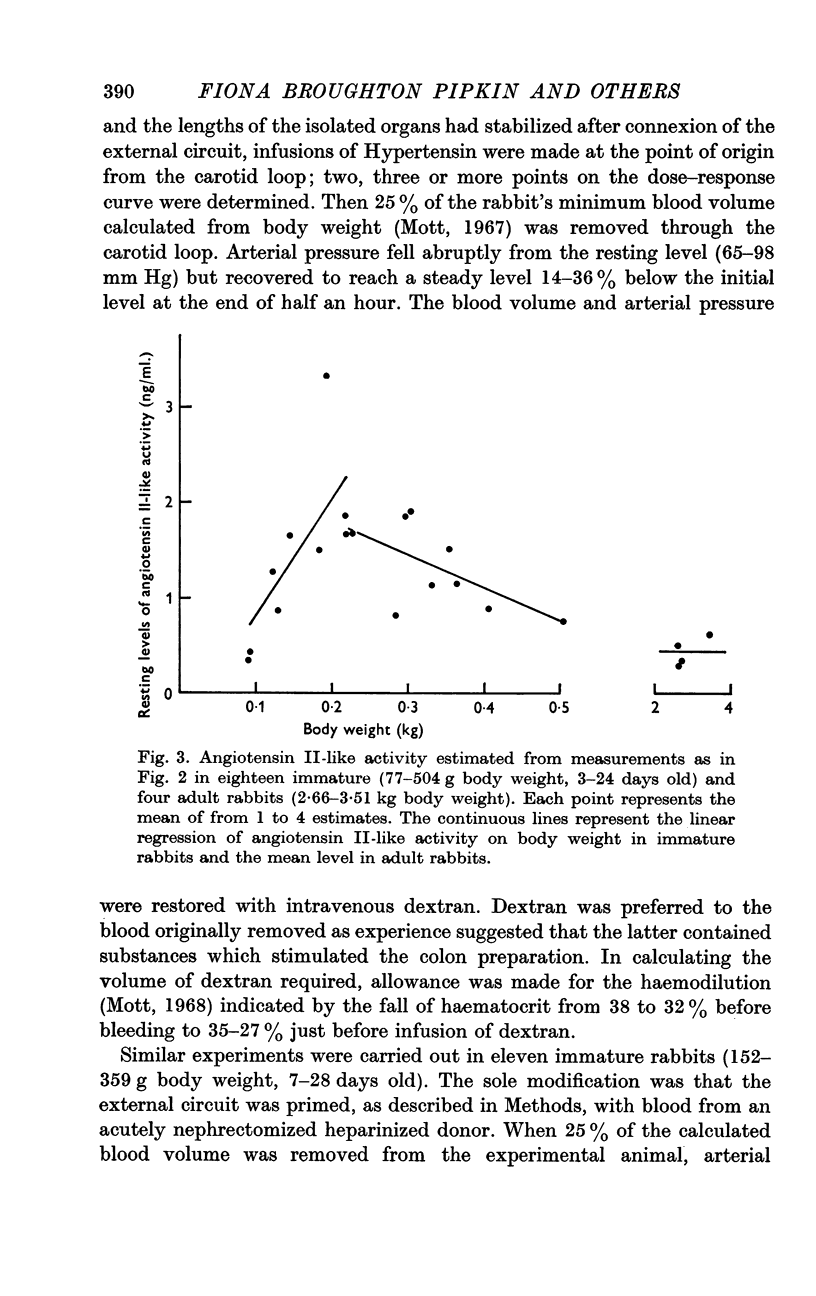
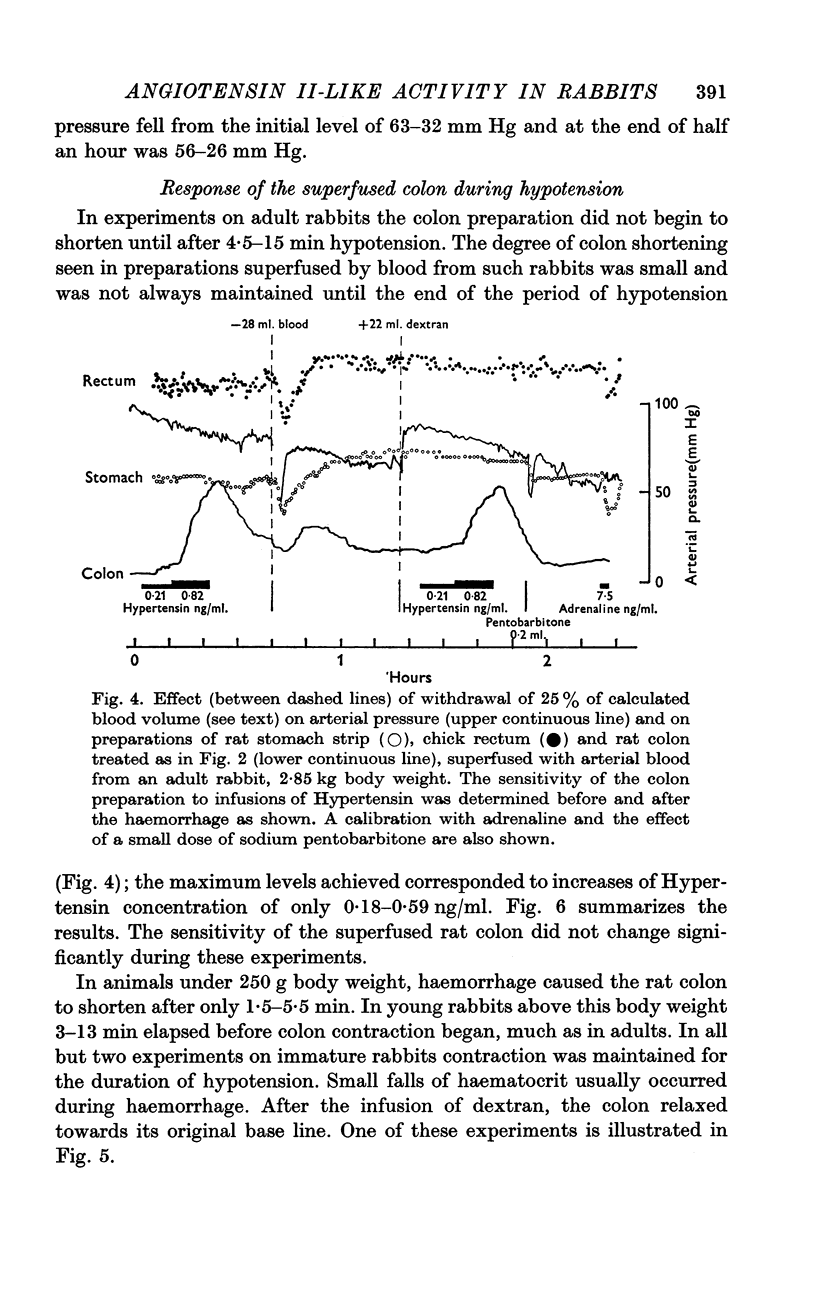
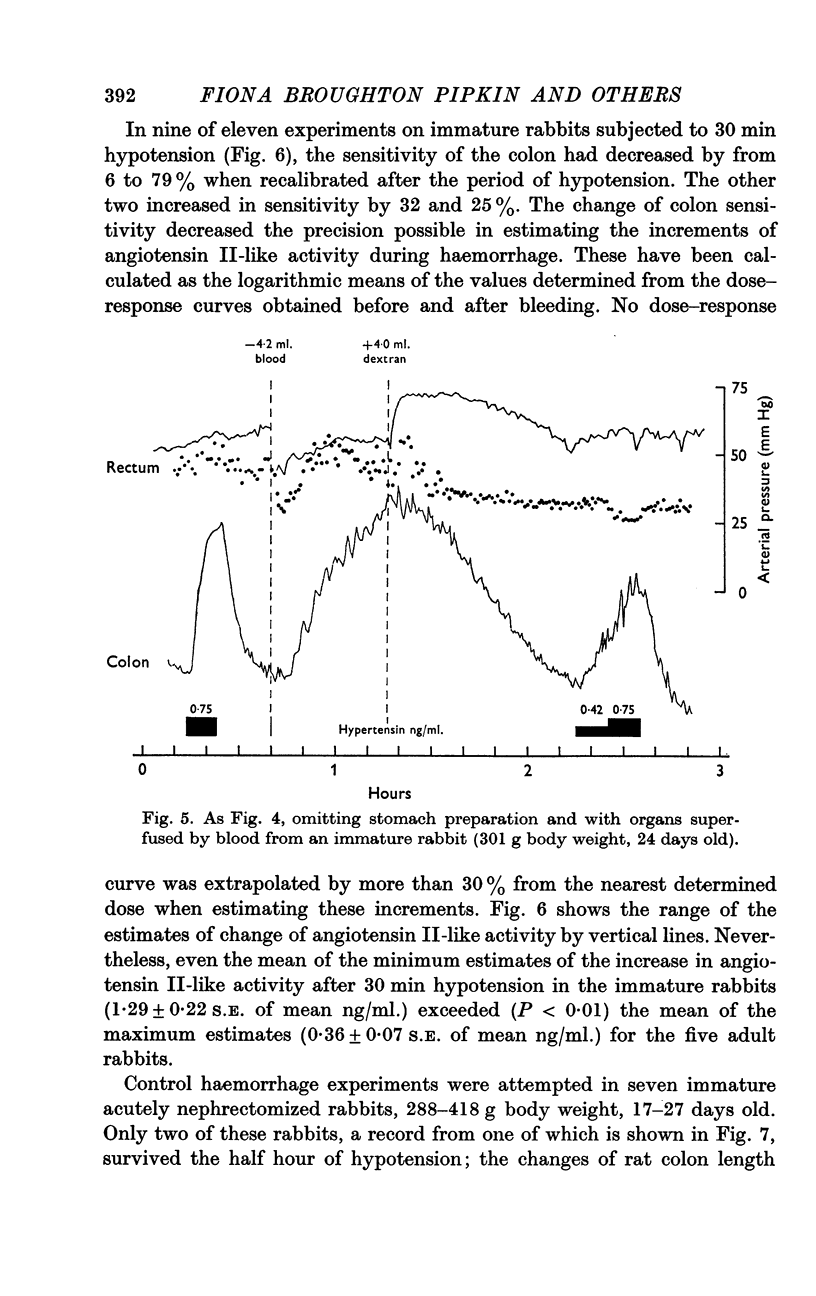
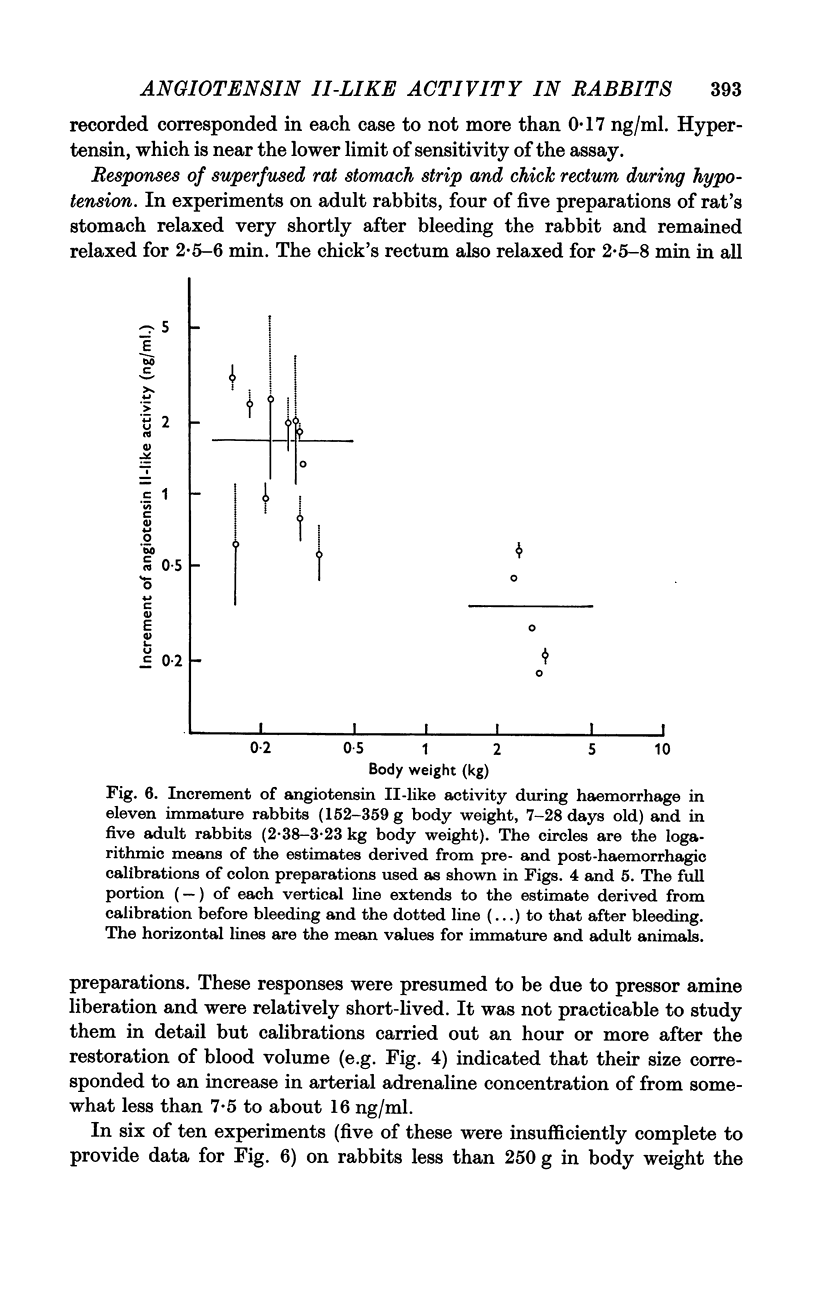
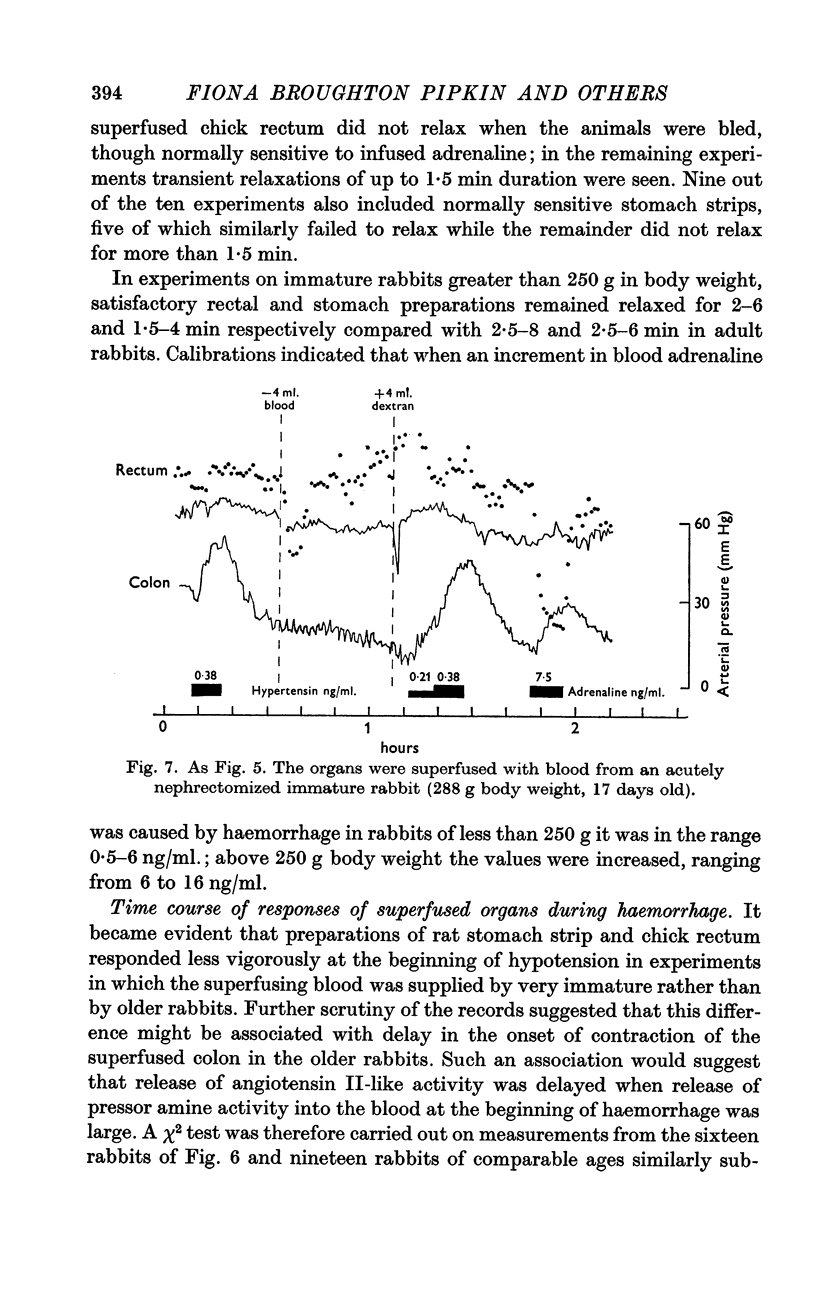
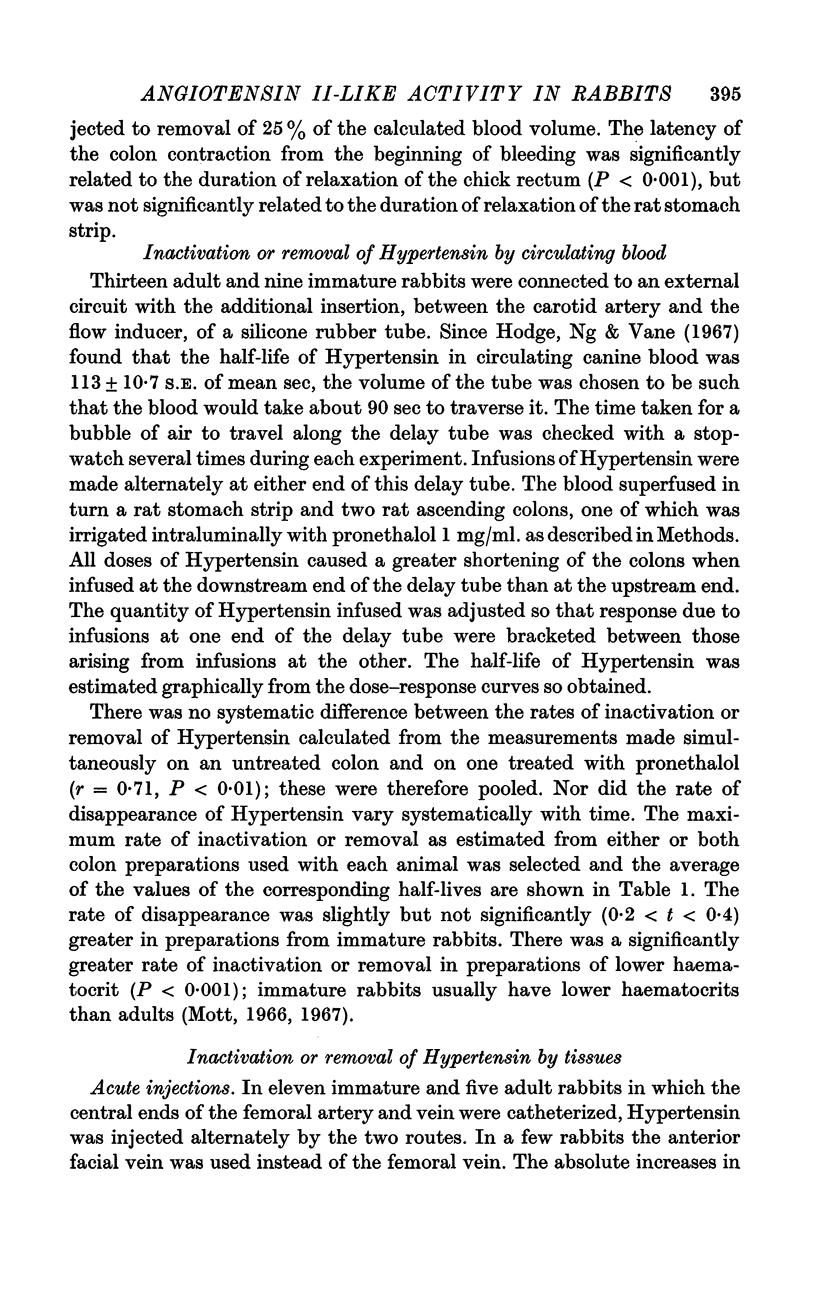
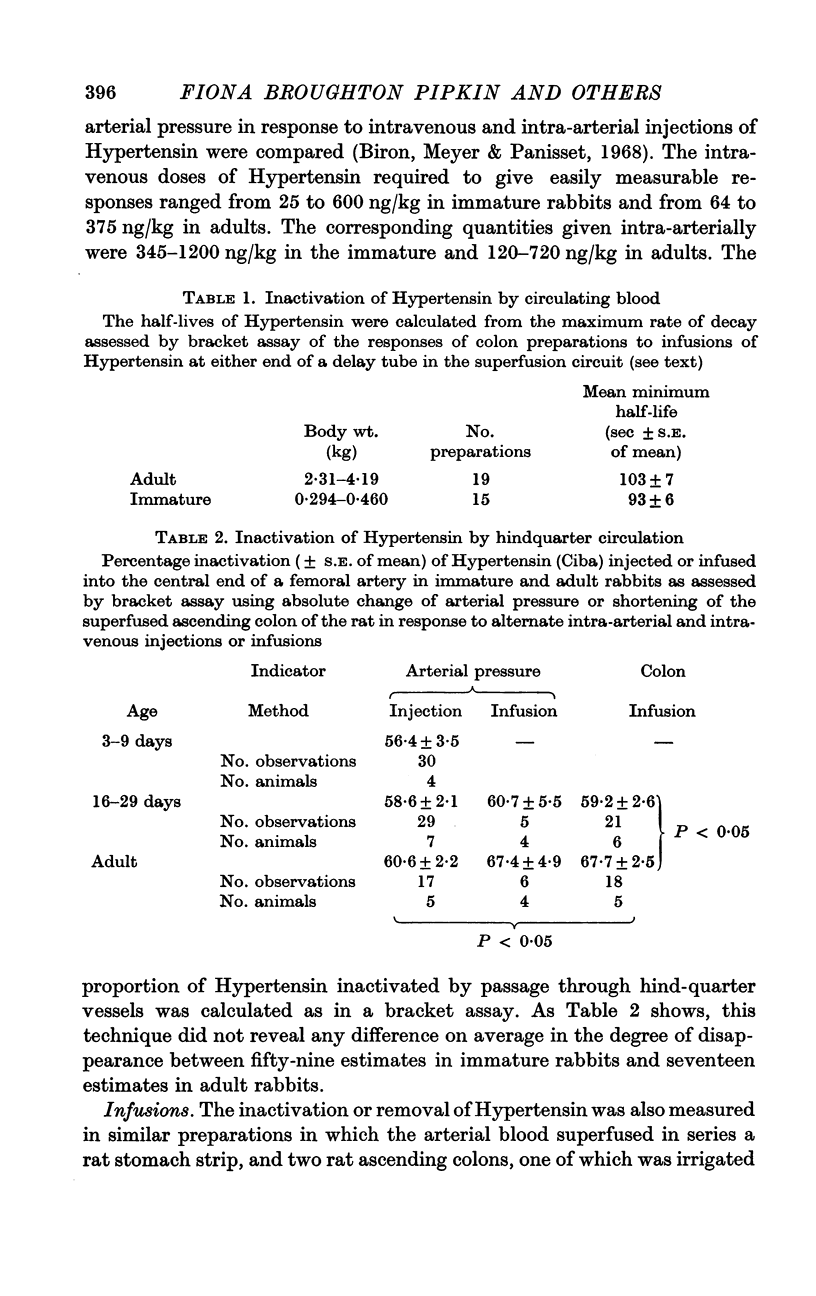
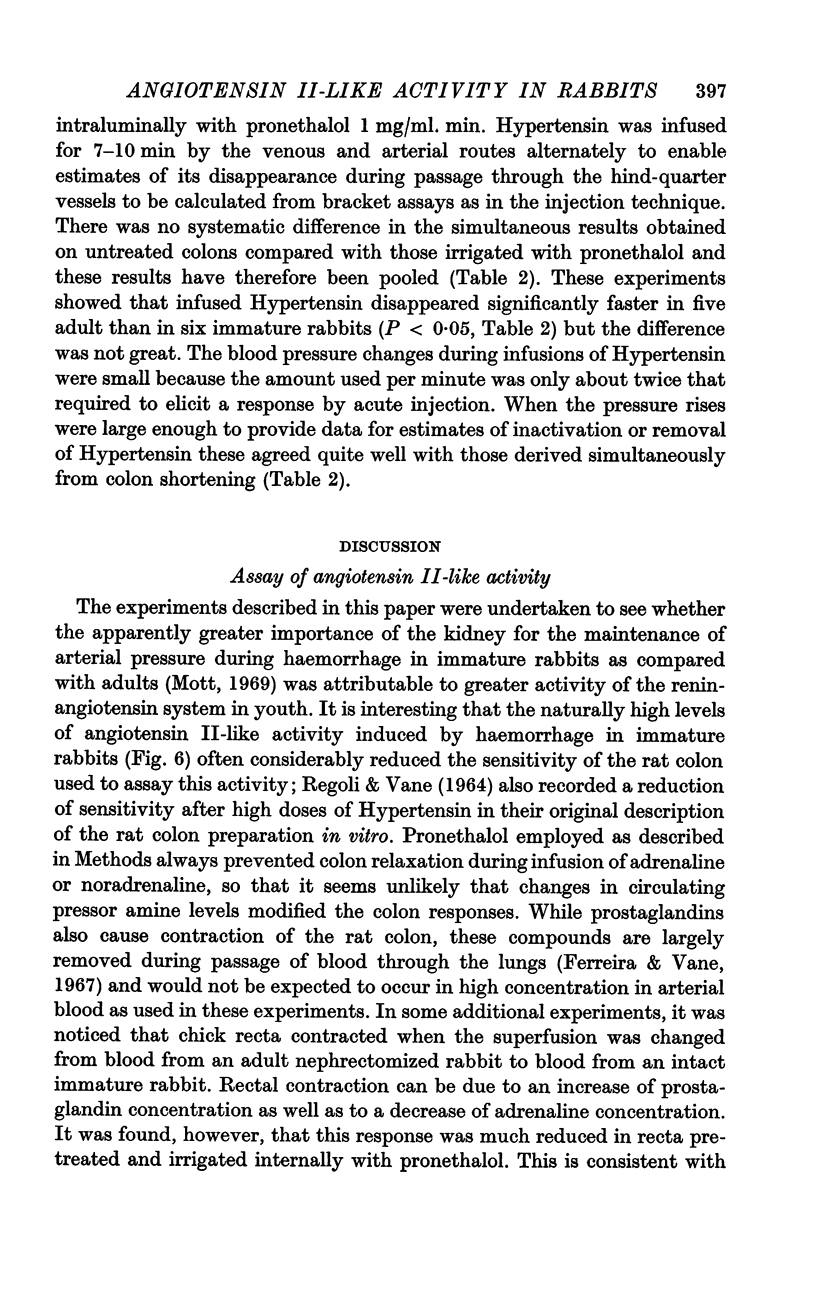
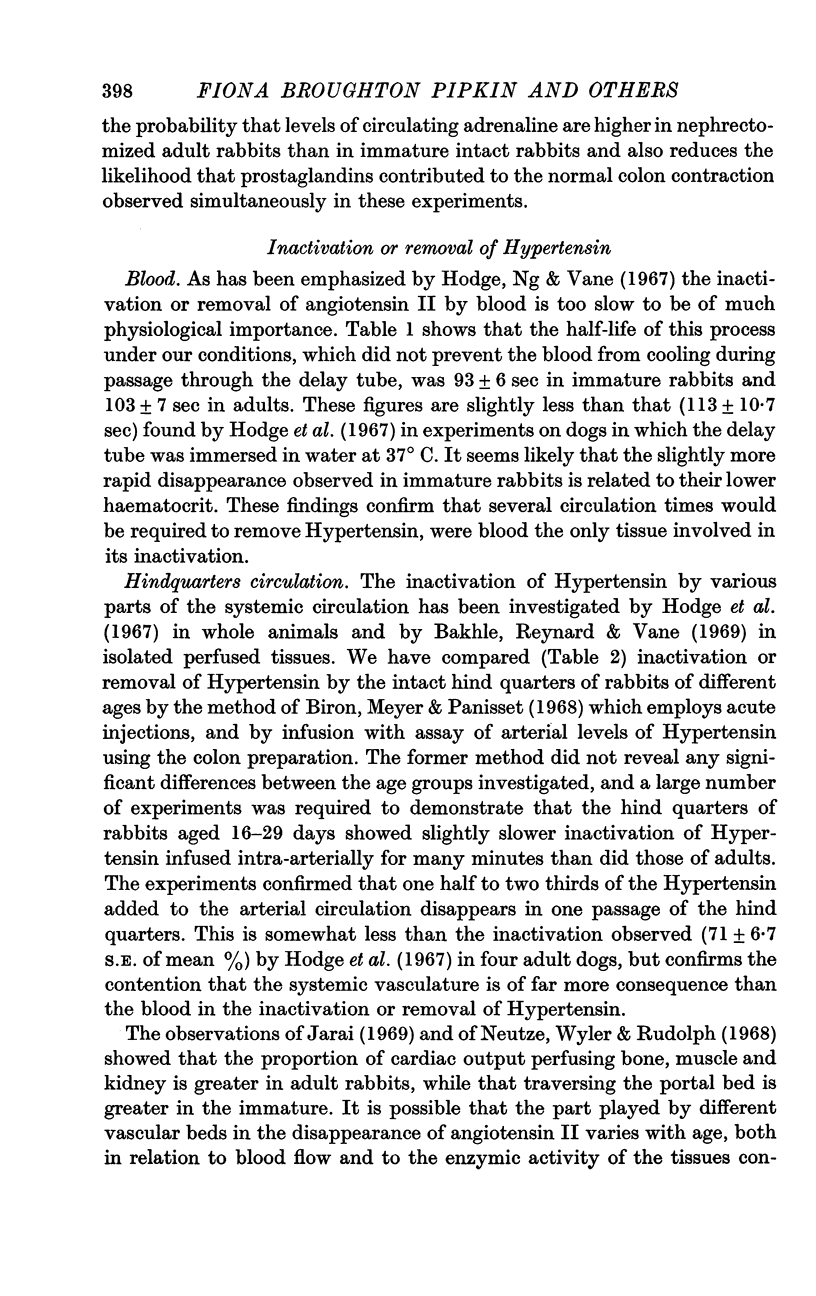
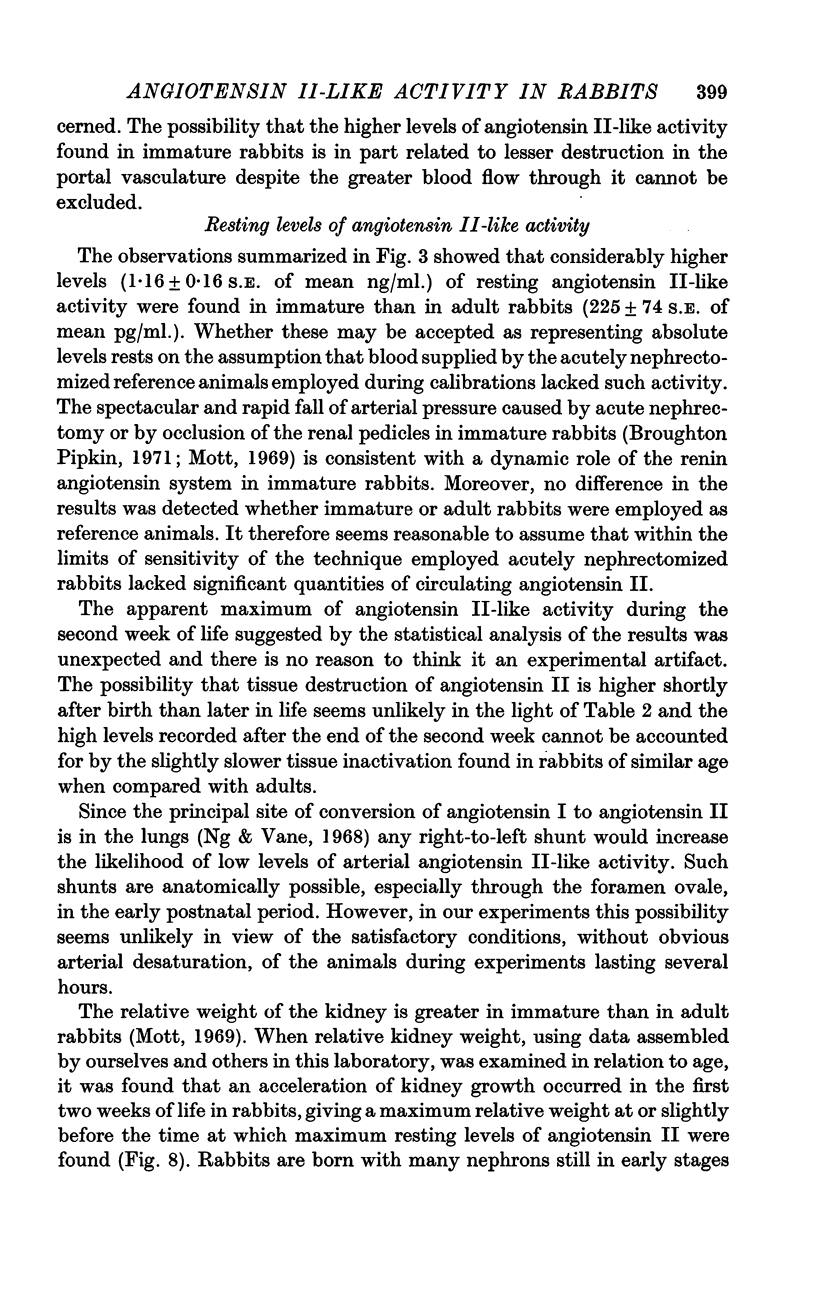
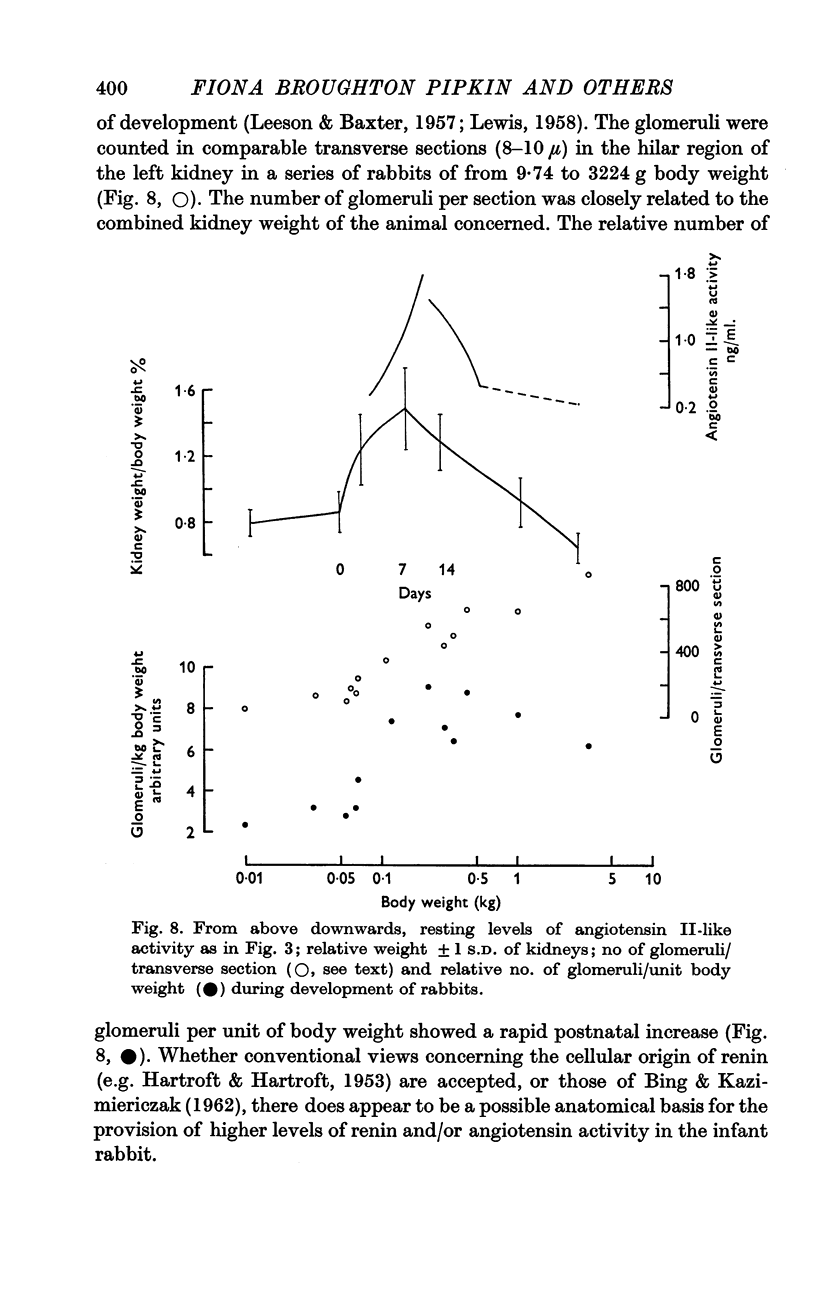
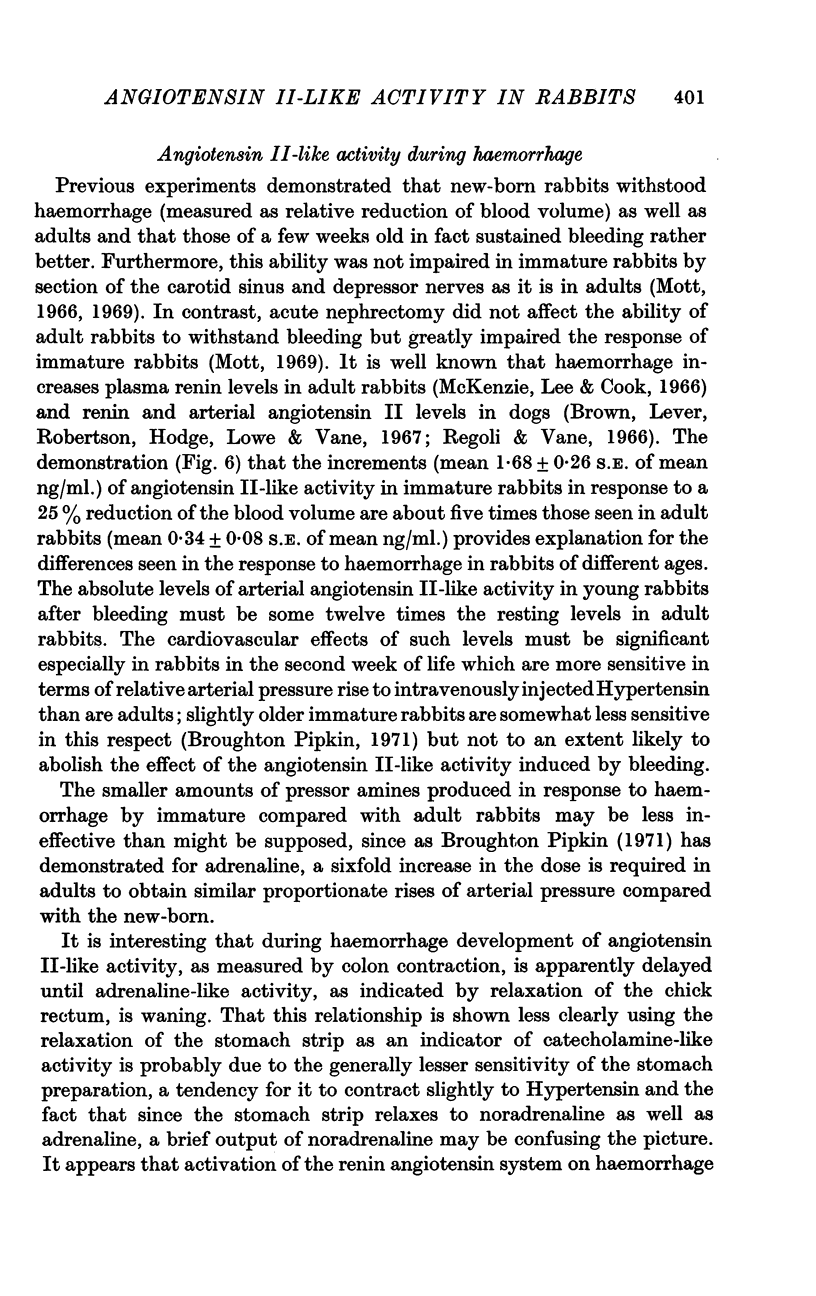
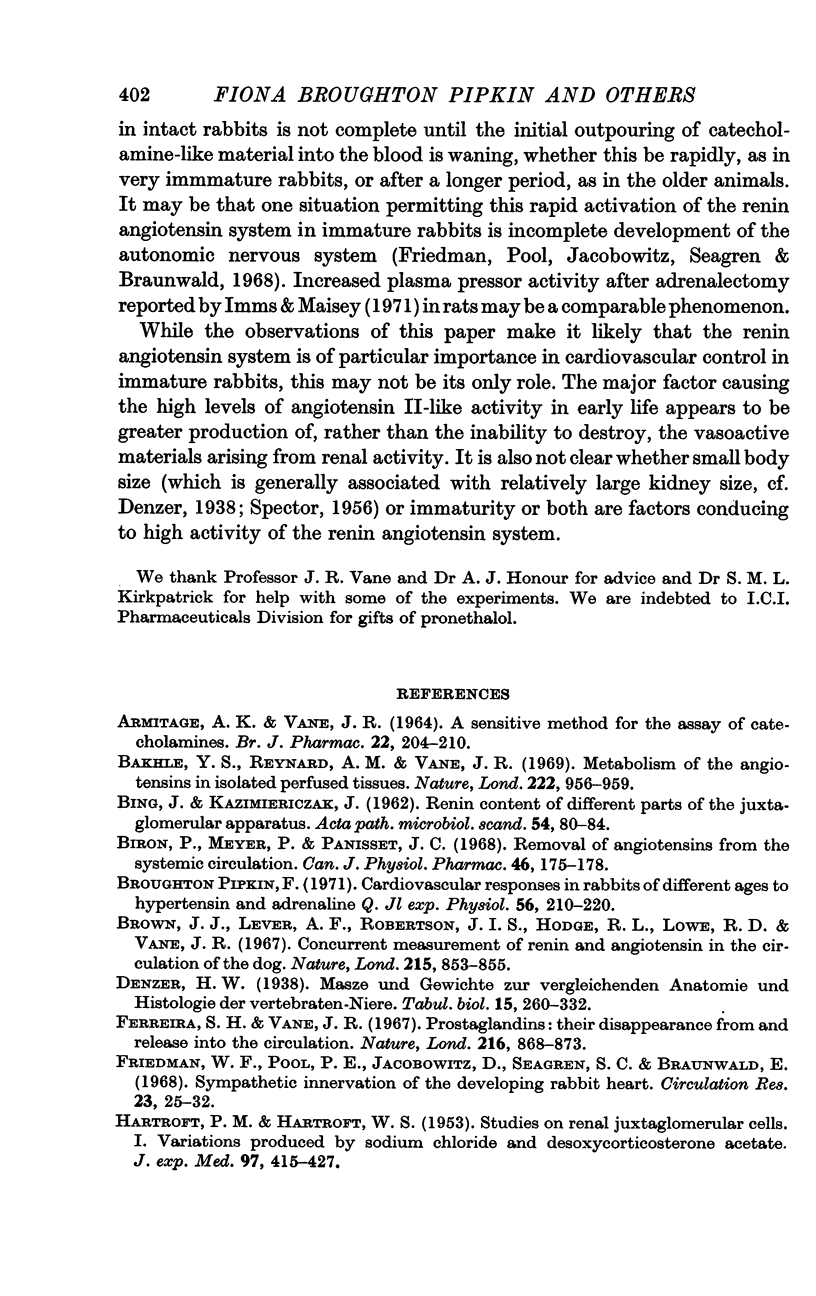
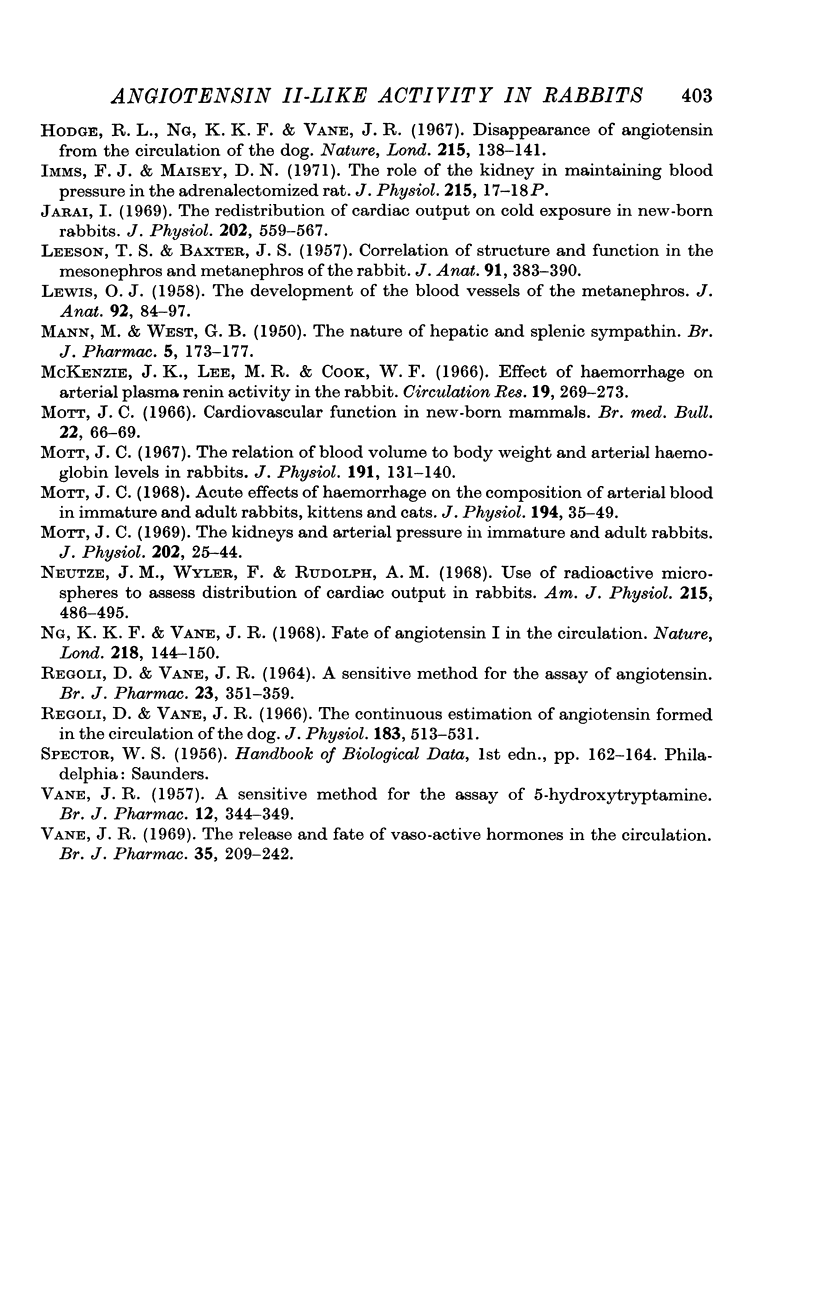
Selected References
These references are in PubMed. This may not be the complete list of references from this article.
- ARMITAGE A. K., VANE J. R. A SENSITIVE METHOD FOR THE ASSAY OF CATECHOL AMINES. Br J Pharmacol Chemother. 1964 Feb;22:204–210. doi: 10.1111/j.1476-5381.1964.tb01560.x. [DOI] [PMC free article] [PubMed] [Google Scholar]
- BING J., KAZIMIERCZAK J. Renin content of different parts of the juxtaglomerular apparatus. 4. Localization of renin in the kidney. Acta Pathol Microbiol Scand. 1962;54:80–84. doi: 10.1111/j.1699-0463.1962.tb01224.x. [DOI] [PubMed] [Google Scholar]
- Bakhle Y. S., Reynard A. M., Vane J. R. Metabolism of the angiotensins in isolated perfused tissues. Nature. 1969 Jun 7;222(5197):956–959. doi: 10.1038/222956a0. [DOI] [PubMed] [Google Scholar]
- Biron P., Meyer P., Panisset J. C. Removal of angiotensins from the systemic circulation. Can J Physiol Pharmacol. 1968 Mar;46(2):175–178. doi: 10.1139/y68-029. [DOI] [PubMed] [Google Scholar]
- Brown J. J., Lever A. F., Robertson J. I., Hodge R. L., Lowe R. D., Vane J. R. Concurrent measurement of renin and angiotensin in the circulation of the dog. Nature. 1967 Aug 19;215(5103):853–855. doi: 10.1038/215853a0. [DOI] [PubMed] [Google Scholar]
- Ferreira S. H., Vane J. R. Prostaglandins: their disappearance from and release into the circulation. Nature. 1967 Dec 2;216(5118):868–873. doi: 10.1038/216868a0. [DOI] [PubMed] [Google Scholar]
- Friedman W. F., Pool P. E., Jacobowitz D., Seagren S. C., Braunwald E. Sympathetic innervation of the developing rabbit heart. Biochemical and histochemical comparisons of fetal, neonatal, and adult myocardium. Circ Res. 1968 Jul;23(1):25–32. doi: 10.1161/01.res.23.1.25. [DOI] [PubMed] [Google Scholar]
- HARTROFT P. M., HARTROFT W. S. Studies on renal juxtaglomerular cells. I. Variations produced by sodium chloride and desoxycorticosterone acetate. J Exp Med. 1953 Mar;97(3):415–429. doi: 10.1084/jem.97.3.415. [DOI] [PMC free article] [PubMed] [Google Scholar]
- Hodge R. L., Ng K. K., Vane J. R. Disappearance of angiotensin from the circulation of the dog. Nature. 1967 Jul 8;215(5097):138–141. doi: 10.1038/215138a0. [DOI] [PubMed] [Google Scholar]
- Járai I. The redistribution of cardiac output on cold exposure in new-born rabbits. J Physiol. 1969 Jun;202(3):559–567. doi: 10.1113/jphysiol.1969.sp008827. [DOI] [PMC free article] [PubMed] [Google Scholar]
- LEESON T. S., BAXTER J. S. The correlation of structure and function in the mesonephros and metanephros of the rabbit. J Anat. 1957 Jul;91(3):383–390. [PMC free article] [PubMed] [Google Scholar]
- LEWIS O. J. The development of the blood vessels of the metanephros. J Anat. 1958 Jan;92(1):84–97. [PMC free article] [PubMed] [Google Scholar]
- MANN M., WEST G. B. The nature of hepatic and splenic sympathin. Br J Pharmacol Chemother. 1950 Jun;5(2):173–177. doi: 10.1111/j.1476-5381.1950.tb01004.x. [DOI] [PMC free article] [PubMed] [Google Scholar]
- McKenzie J. K., Lee M. R., Cook W. F. Effect of hemorrhage on arterial plasma renin activity in the rabbit. Circ Res. 1966 Aug;19(2):269–273. doi: 10.1161/01.res.19.2.269. [DOI] [PubMed] [Google Scholar]
- Mott J. C. Acute effects of haemorrhage on the composition of arterial blood in immature and adult rabbits, kittens and cats. J Physiol. 1968 Jan;194(1):35–49. doi: 10.1113/jphysiol.1968.sp008393. [DOI] [PMC free article] [PubMed] [Google Scholar]
- Mott J. C. Cardiovascular function in new-born mammals. Br Med Bull. 1966 Jan;22(1):66–69. doi: 10.1093/oxfordjournals.bmb.a070440. [DOI] [PubMed] [Google Scholar]
- Mott J. C. The kidneys and arterial pressure in immature and adult rabbits. J Physiol. 1969 May;202(1):25–44. doi: 10.1113/jphysiol.1969.sp008793. [DOI] [PMC free article] [PubMed] [Google Scholar]
- Mott J. C. The relation of blood volume to body weight and arterial haemoglobin levels in rabbits. J Physiol. 1967 Jul;191(1):131–140. doi: 10.1113/jphysiol.1967.sp008241. [DOI] [PMC free article] [PubMed] [Google Scholar]
- Neutze J. M., Wyler F., Rudolph A. M. Use of radioactive microspheres to assess distribution of cardiac output in rabbits. Am J Physiol. 1968 Aug;215(2):486–495. doi: 10.1152/ajplegacy.1968.215.2.486. [DOI] [PubMed] [Google Scholar]
- Ng K. K., Vane J. R. Fate of angiotensin I in the circulation. Nature. 1968 Apr 13;218(5137):144–150. doi: 10.1038/218144a0. [DOI] [PubMed] [Google Scholar]
- REGOLI D., VANE J. R. A SENSITIVE METHOD FOR THE ASSAY OF ANGIOTENSIN. Br J Pharmacol Chemother. 1964 Oct;23:351–359. doi: 10.1111/j.1476-5381.1964.tb01591.x. [DOI] [PMC free article] [PubMed] [Google Scholar]
- Regoli D., Vane J. R. The continuous estimation of angiotensin formed in the circulation of the dog. J Physiol. 1966 Apr;183(3):513–531. doi: 10.1113/jphysiol.1966.sp007881. [DOI] [PMC free article] [PubMed] [Google Scholar]
- VANE J. R. A sensitive method for the assay of 5-hydroxytryptamine. Br J Pharmacol Chemother. 1957 Sep;12(3):344–349. doi: 10.1111/j.1476-5381.1957.tb00146.x. [DOI] [PMC free article] [PubMed] [Google Scholar]
- Vane J. R. The release and fate of vaso-active hormones in the circulation. Br J Pharmacol. 1969 Feb;35(2):209–242. doi: 10.1111/j.1476-5381.1969.tb07982.x. [DOI] [PMC free article] [PubMed] [Google Scholar]


